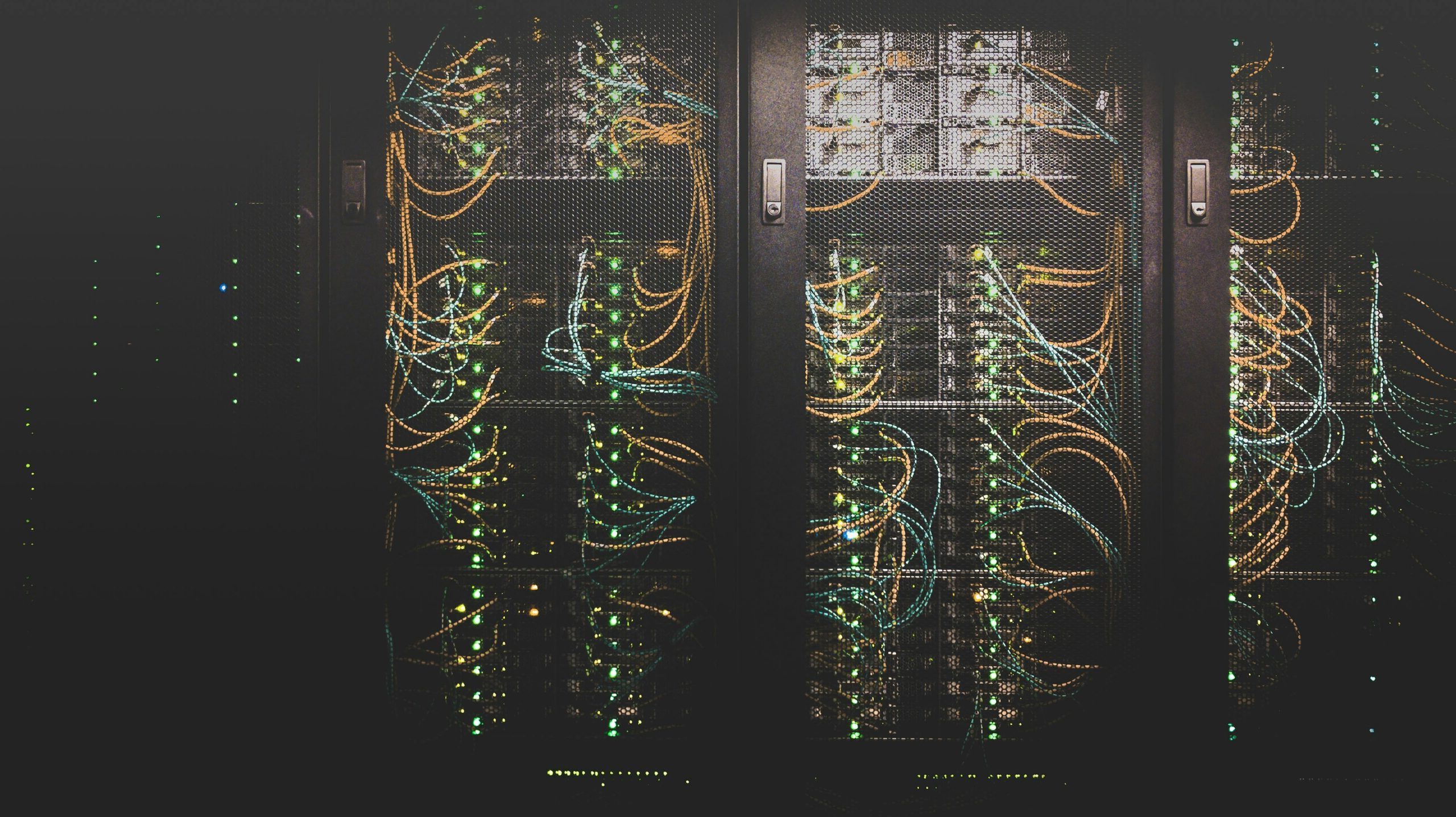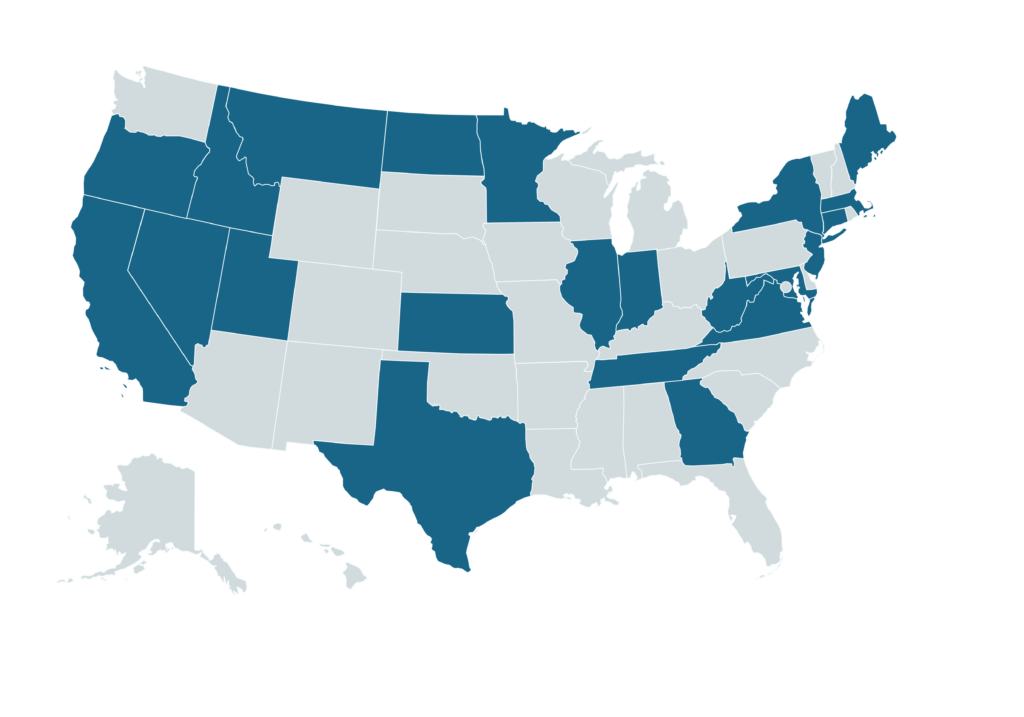
Policy Update
States Act to Align Data Center Energy Demand with Climate Goals
April 2, 2025
Overview
As data centers drive a surge in electricity demand, an increasing share of states are introducing legislation to ensure that data center growth does not raise costs, weaken reliability, or compromise climate goals. So far in 2025, at least 22 states have introduced over 60 bills to address the grid, energy, and environmental impacts of data centers.
Why It Matters: Data Centers Driving Energy Demand
U.S. electricity demand is forecast to increase 15.8% by 2029, a level of growth the U.S. hasn’t seen since the 1980s. With rising demand comes rising costs as states and regions struggle to build new transmission and deploy sufficient generation to meet these needs. In a 2024 report, consulting firm ICF found that the cost of electricity could increase by an average of 19% by 2028 due to demand growth. Much of these additional costs would be passed on to ratepayers.
Data centers – expected to comprise 7.5% of total U.S. electricity use by 2030 – are one of the major drivers of this heightened demand growth. The rapid development and significant power demand of data centers present unique challenges for grid reliability, affordability, and decarbonization.
The State of Play: Which States Are Moving Data Center Bills in 2025?
Acknowledging the unique challenges presented by data centers, states are advancing bills to ensure data center development takes place harmoniously with grid and clean energy goals. Of the 65 pieces of 2025 legislation introduced across 22 states, most bills focus on: (1) ratepayer protections, (2) energy use transparency, (3) renewable requirements, and (4) siting processes.
Below are the specific policy trends that NCEL is seeing in 2025.

Ratepayer Protection
At least 12 states have introduced bills to protect ratepayers from higher electricity prices due to data center energy demand and infrastructure upgrades.
- Prohibiting Costs Being Passed Down: Georgia’s legislation (SB 34) would prohibit any grid or energy costs incurred solely to serve data centers from being passed down to ratepayers.
- Special Rates: Virginia (HB 2084) and Oregon (HB 3546) would direct their state public utility commissions to create a special rate for data centers, while New Jersey (AB 5462) would charge their utilities with a similar request.
- Direct Contracts: Utah’s legislation (SB 132), which passed both chambers and is waiting on a signature from the Governor, enables power suppliers to directly contract with data centers to supply their energy, thereby ensuring costs are not passed onto other ratepayers.
Transparency and Reporting on Energy Usage
Grid planners across the country are increasingly struggling to understand how much energy data centers are using in their state and region. At least 10 states have filed legislation that would require greater transparency from data centers on their energy usage — data that would help both grid regulators and state legislators make informed policymaking decisions in the future.
- Preventing ‘Venue Shopping’: Texas – which previously passed legislation requiring energy disclosures from the state’s massive bitcoin industry (2023’s SB 1929) – introduced SB 6 and SB 1641. These bills would require data center developers to disclose in their interconnection request if they have an identical request pending in other states. This is sometimes called ‘venue shopping’ and can cause states to overestimate load growth and overplan their infrastructure developments.
- Impact Studies: A pair of Maryland bills (HB 0270 / SB 0116) that would commission a study on the environmental and energy impacts of data centers on the state have each passed their respective chambers.
- Self-Reporting: Connecticut (SB 1292 / HB 5076), Georgia (HB 528), New Jersey (S 4143 and S 4293), Oregon (HB 3698), Indiana (SB 135), and Illinois (SB 2181) have all introduced bills that would require data centers to regularly report their energy and water usage.
Renewable Energy Requirements and Demand Side Management
As data centers continue to drive demand, many states are concerned data centers will jeopardize state decarbonization goals and continue to raise prices by keeping older, more expensive fossil fuel plants online. Eight states have introduced bills that would enact requirements on data centers’ renewable energy usage, levels of emissions, and efficiency and demand flexibility.
- Renewable Requirements: New Jersey (S 4143) legislation would require data centers to derive all their energy from renewable or nuclear sources.
- Emission Standards: Oregon (HB 3698) would require emissions standards for backup generators used by data centers.
- Efficiency Goals: New York’s bill (S 6394) would direct the New York Power Authority, in conjunction with state agencies, to develop energy efficiency goals for the design and operation of data centers. The bill also prohibits fossil fuel power purchase agreements from providing incentives or discount rates to data centers.
Siting and Zoning Processes
Data center proliferation has also begun to alter community landscapes and impact people’s ways of life. Impacts on water, agriculture, conservation lands, and air quality are some of the top concerns. Thirteen states have introduced bills that either enhance or require greater local involvement before a data center is constructed.
- Site Assessments: Indiana (SB 135), Virginia (SB 285), and Tennessee (HB 0946 / SB 0962) introduced legislation that would require local site assessments, examining impacts on water and natural resources, before a data center is approved.
- Restrictions: Minnesota (HF 245 / SF 608) and Virginia (HB 337 and HB 1010) introduced legislation restricting the siting of data centers.
A Learning Opportunity for Other States: Virginia
Virginia, home to the world’s largest concentration of data centers in the world, has been significantly impacted by the energy demand created by data centers. A 2024 study by the Joint Legislative Audit and Review Commission (J-LARC) found that under current rate practices, “a building out to meet data center demand in VA could drive up generation- and transmission-related ratepayer costs by $14 to $37 a month.”
Following the report, lawmakers introduced over 15 bills in 2025. One of the bills enacted (HB 2084) directed the State Corporation Commission (Virginia’s utility regulator) to evaluate whether its rates are fair and reasonable for all customer classes, and to make recommendations for new classes if any are found to be unfair.
What Legislators Are Saying
New Jersey State Assemblyman Dave Bailey: “We need to be proactive in planning. There is the real risk that data center energy and infrastructure demands end up hurting the ratepayer. I’ve introduced several bills that look at establishing a regulatory framework to ensure data centers pay their fair share and protect everyday customers from bearing the burden of passed-on costs. We want to encourage data center development in New Jersey, but the trade-off can’t be unaffordable utility bills.”
Oregon State Representative Pam Marsh: “Traditionally, growth in energy demand was relatively balanced across all users, justifying roughly equal distribution of costs. But the explosion of huge technology facilities has upended that traditional metric. For example, since 2019, data center growth in PG&E territory has been equivalent to an increase of 400K residential customers. But residential demand has grown by only 63,000 people, or 24,000 customer accounts. Without intervention, the costs created by the disproportionate demand of big energy users will be borne by residential consumers who are already struggling. Here in Oregon, we are establishing a new rate structure to make sure that data centers pay all of the costs involved in their electricity needs without shifting those costs to other payers.”
Stay Informed on Energy Policy With NCEL
Stay current on climate and energy policy trends across the country this year with NCEL’s Bill Tracking Map.